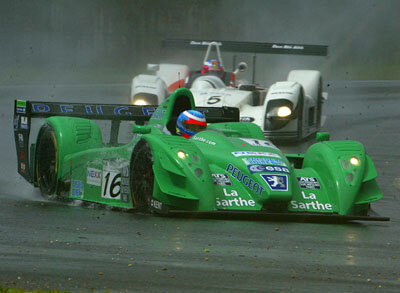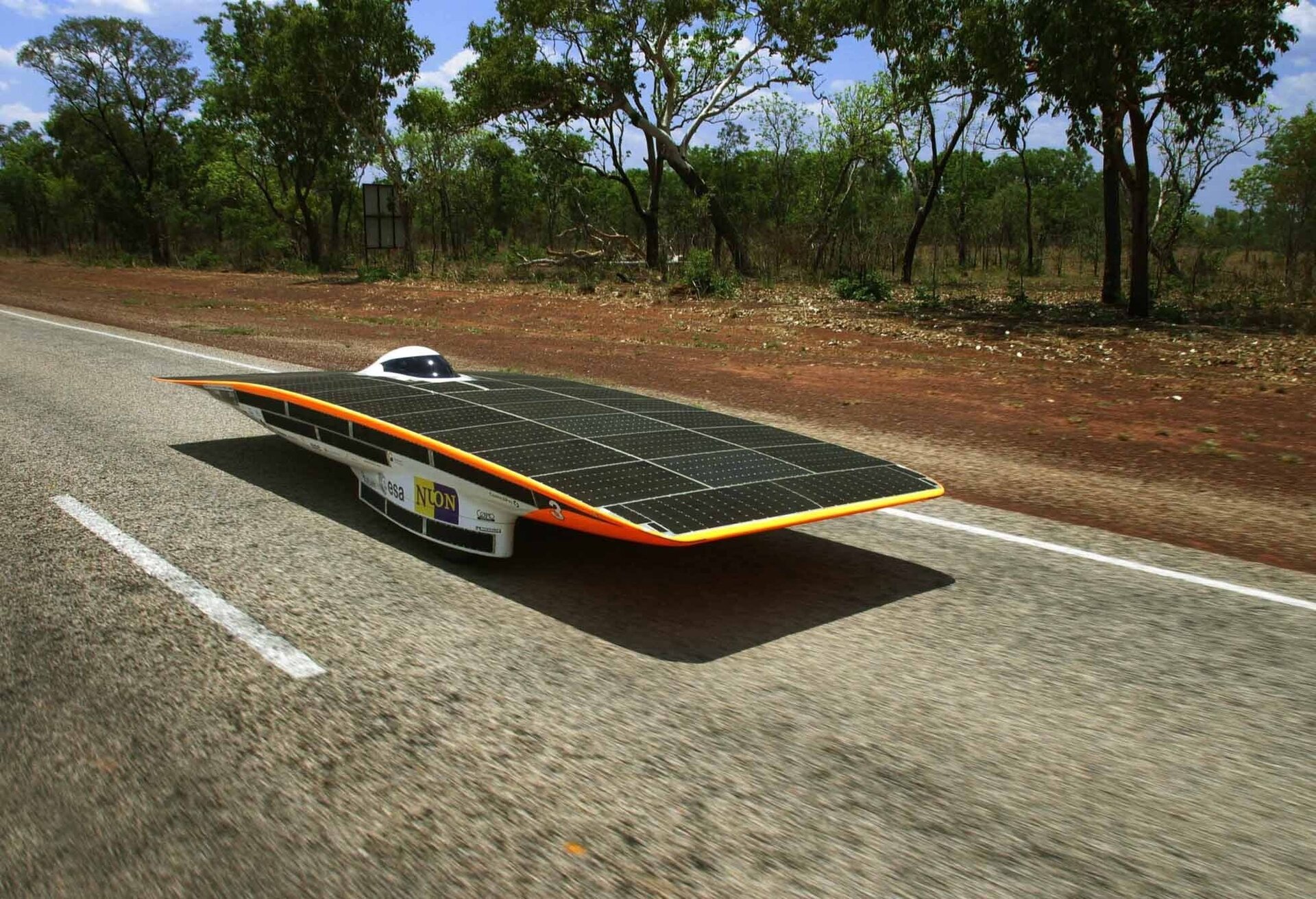Space technology yields transports of delight
It's not surprising that there are connections between the world of motorsport and the space industry. Both work constantly to develop new technologies to improve performance and safety. A range of teams have worked with ESA to develop cars, whether it’s the challenge of creating a futuristic solar-powered car, or a way of racing better in traditional events.
Space technology supplied by ESA's Technology Transfer Programme, helped the Nuna and Nuna II cars in their successful campaigns at the World Solar Challenge road race. The solar cars race from Darwin to Adelaide – a distance of 3010 km through the heart of Australia.
Improved solar cells and supporting technology, helped the Alpha Centauri team to start the race among the favourites in 2001, even though they had ever competed before. The streamlined machine could reach a theoretical top speed of over 160 km per hour although it had to observe the Australian speed limits driving on public highways.
The space technology aboard included the best dual junction and triple junction gallium-arsenide solar cells. Nuna’s aerodynamically optimized outer shell was built from space-age plastics to keep it light and strong. The main body is made from carbon fibre, reinforced with Kevlar, a material used in satellites, but perhaps more familiar as a material used in bulletproof vests. Nuna also carried Maximum Power Point Trackers, small devices that guarantee an optimal balance between power from the battery and the solar cells, even in less favourable situations like shade and cloud. Many satellites carry these devices, for instance ESA's Rosetta mission.

Also of help were two small strips of solar cells on the sides of the car. These originally belonged to the NASA/ESA Hubble Space Telescope. The cells were part of a large solar array, retrieved by ESA astronaut Claude Nicollier and brought back to Earth in 1993. They were donated to the Alpha Centauri Team as a special mascot and served to power the car’s communication equipment.
Nuna completed the race in 2001 in a record-breaking time of 32 hours 39 minutes. The average speed of the car was 91 kilometres per hour, also a new record. Two years later Nuna II crossed the finish line in Adelaide in another new record : 30 hours 54 minutes.
The average speed of Nuna II, nicknamed the 'Flying Dutchman' by the Australian press, was 97 kilometres per hour. Its solar cells harvested up to 20% more energy than those used on Nuna in 2001.

In the FIA Sportscar Championship, ESA technology was used for performance and security. Carbon composite materials, used to build satellites, were used in the construction of the Pescarolo Sport’s car. This gave a reduction of 29 kg in the car’s weight. To improve safety, thermal shields similar to those used on Europe’s Ariane launchers were placed between the engine and the flexible fuel tank to protect it from engine fire hazards. The same material was also used to insulate the manifold and turbo.
Henri Pescarolo himself tested cooling technologies from space during the 2003 Paris-Dakar rally. A special thermal screen using technology developed for the European launch vehicle Ariane provided highly advanced protection and thermal insulation. Thanks to the thermal screen, the racing team enjoyed a significant safety boost with the decreased risk of fire in case of oil or gasoline leaks. The Italian company Grado Zero Espace provided a cooling system for the drivers' helmets reducing the risk of dehydration for the drivers.
In addition, the drivers enjoyed drinks served in a completely new type of self-cooling container. Advanced numerical simulation techniques developed for ESA for satellite mission calculations made it possible for French company ThermaGen to calculate precisely the behaviour of the complex physical phenomena that creates the cooling effect and to design the self-cooling container.




